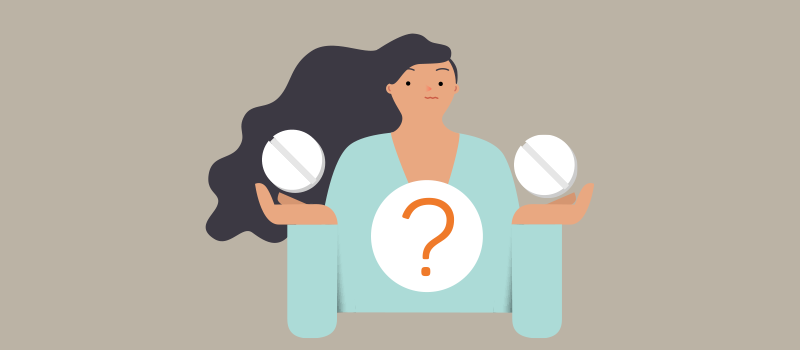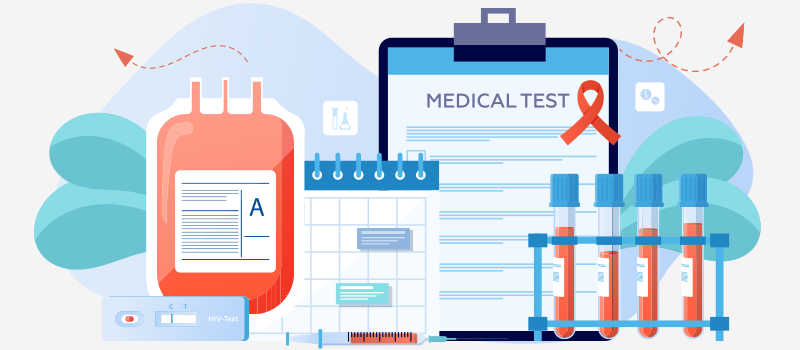What’s the Buzz
The Bee Healthy Blog
Can Antibiotics Cause Yeast Infection (Candidiasis)?

A vaginal yeast infection is a fungal infection caused by a fungus called Candida albicans. It causes itching, irritation, and discharge in the vagina and vulva (vaginal opening). Approximately 3 out of 4 women will suffer from symptomatic yeast infections in their lifetime. Medications can effectively treat most yeast infections. However, some women experience recurrent yeast infections and require longer treatment courses. Certain things can increase your risk of getting a yeast infection. This article will explain the link between antibiotic use and yeast infections. We will also talk about which antibiotics can cause yeast infections and how you can prevent them.
What are vaginal yeast infections?
As mentioned above, vaginal yeast infections, also called vaginal candidiasis, are fungal infections caused by Candida albicans. This fungus thrives in warm, moist areas such as the mouth and genitals. In healthy women, the fungus is kept in check by beneficial bacteria, also referred to as the “good bacteria” in the vagina flora. However, having a weakened immune system or taking certain antibiotics that can wipe out the “good’ bacteria population. Fungi then grow and become more dominant, which is when you can experience symptoms of a yeast infection.
Can antibiotics cause candida yeast?
Yes, antibiotics can cause vaginal candidiasis. Here’s how. A healthy vagina has a balanced mix of yeast and bacteria. A specific type of bacteria called Lactobacillus help to maintain a slightly acidic environment in the vagina, which keeps the yeast in check and prevents overgrowth.
Certain broad-spectrum antibiotics prescribed to treat a bacterial infection caused by harmful bacteria also wipe out beneficial bacteria like Lactobacillus. In other words, antibiotics kill both harmful and healthy bacteria.
As a result, the vagina becomes less acidic, and the yeast can grow out of control, leading to a vaginal infection.
Which antibiotics cause yeast infections?
Not all antibiotics cause vaginal infections. Antibiotics that can increase your risk include:
- Amoxicillin: a penicillin-like antibiotic used to treat a wide variety of bacterial infections such as middle ear infections, strep throat, skin infections, pneumonia, urinary tract infections, and others.
- Tetracyclines: (examples include doxycycline, minocycline, and tetracycline) are used to treat ear infections, skin infections, acne, and sexually transmitted infections.
- Carbapenems: (examples include ertapenem and meropenem), which are used to treat serious intra-abdominal infections, bacterial meningitis, antibiotic-resistant pneumonia, and urinary tract infections that are resistant to other antibiotics.
- Quinolones: (examples include moxifloxacin, levofloxacin, and ciprofloxacin), which are prescribed for bronchitis, pneumonia, UTIs, and bacterial prostatitis.
What are yeast infection symptoms?
Common symptoms of yeast infections include vulvar and vaginal itching, soreness, irritation; redness and swelling of the vulva; a thick, white vaginal discharge that looks like cottage cheese; pain during sex; and discomfort or pain during urination.
How do doctors treat vaginal candidiasis?
Most vaginal yeast infections can be treated with a short course of antifungal medicine for 3-7 days. Antifungal medications are available as tablets, creams, ointments, and suppositories. Examples, include terconazole and miconazole (Monistat 3). Doctors can also prescribe a single-dose antifungal medicine such as oral fluconazole (Diflucan). A longer course of treatment may be required for severe symptoms or recurrent yeast infections.
What are the risk factors for a vaginal yeast infection?
Any woman of any age can get a yeast infection. In fact, most women will get a yeast infection at some point in their lifetime, but the risk of developing a yeast infection is higher:
- During the childbearing years (after puberty and before menopause).
- At the time of initiating sexual activity for the first time (vaginal yeast infections are not sexually transmitted infections, but there is evidence that they are linked to oral-genital sex).
- If you are taking antibiotics that kill healthy bacteria in the vagina.
- If you have high estrogen levels (for example, if you are taking a birth control pill that contains high-dose estrogen or are on estrogen hormone therapy).
- If you have a weakened immune system or diabetes (high blood sugar).
How to prevent a vaginal yeast infection?
Antibiotic use is a known cause of vaginal yeast infections. That’s why it’s important only to take antibiotics as prescribed by your doctor. Also, it is important to know that antibiotics do not treat viral infections such as colds and the flu.
If you must take antibiotics, make sure you finish the full course prescribed by your doctor to prevent antibiotic resistance.
Also, if you are at a higher risk of vulvovaginal candidiasis due to certain health conditions, talk to your doctor. Your doctor may recommend over-the-counter antifungal creams or suppositories to prevent vulvovaginal candidiasis caused by antibiotic treatment.
Probiotic supplements contain good bacteria. There is evidence that probiotics promote vaginal health, so they may help prevent yeast infections caused by antibiotic use.
Avoid douching, which removes healthy bacteria from your vagina. Also, avoid vaginal deodorant products such as fragranced tampons, pads, powders, and sprays.
It’s important to change out of wet underwear and bathing suits as soon as possible because the yeast thrives in moist environments. Cotton underwear can reduce your risk of getting yeast infections and other vaginal infections by absorbing moisture. The same is true for loose-fitting clothing, as tight pants can build heat and moisture, leading to a yeast infection.
Lastly, you should avoid often use of hot tubs and very hot baths because yeast thrives in warm environments.
Wrapping Up
Along with harmful bacteria, certain antibiotics kill good bacteria in the vagina, which usually keeps the vagina slightly acidic. This can lead to yeast growth and a vaginal yeast infection.
While taking antibiotics, if you develop symptoms of a yeast infection caused by Candida fungi, such as intense itching, irritation, discharge, and a burning sensation from the vaginal area, contact your healthcare provider for professional medical advice and diagnosis and treatment.
Reference:












SOCIAL